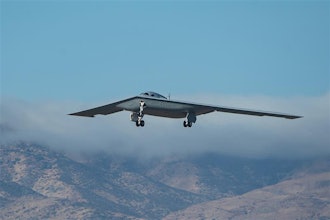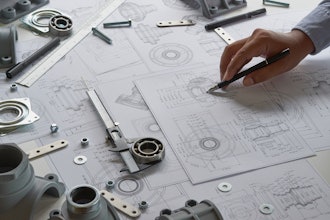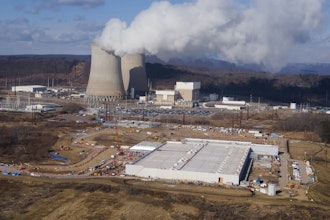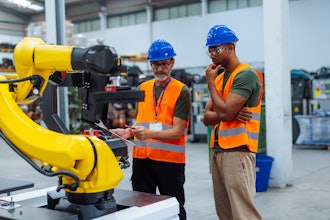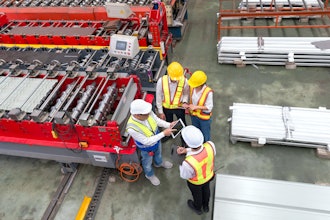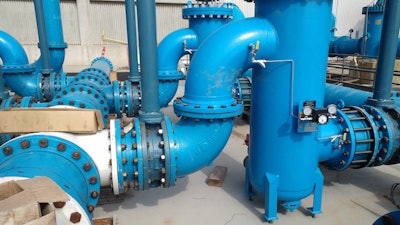
For industry, wastewater treatment is required to comply with regulations like the EPA’s Clean Water Act, which sets wastewater standards for industry and national water quality criteria for pollutants in surface waters. Although treatment options like settling tanks and automatic backwash strainers are commonly used, these have substantial limitations when conditions are unpredictable.
The problem for industrial wastewater treatment is that no fluid processing or filtration system remains static. Treatment conditions continually change due to variable factors such as pressure, particle size, solids loading and even the presence of sticky biologicals.
“The flow rate and volume of suspended solids in the fluid changes depending on production demands and the equipment used as well as the time of day, day of the week and seasonal factors,” said Robert Presser, Vice President of Acme Engineering Prod., Inc., a North American manufacturer of industrial self-cleaning strainers. The company is an ISO 9001:2015 certified manufacturer of environmental controls and systems with integrated mechanical, electrical and electronic capabilities.
Fortunately, a separation technology designed to tolerate variability – automatic scraper strainers – is being used after settling tanks and before further processing when reliable, economic, low-maintenance water treatment is necessary. These self-cleaning scrapers filter out both tiny particles and larger debris, utilizing a blade and brush that work together to keep all straining surfaces fully effective and free of obstruction.
The technology assures reliable straining that facilitates regulatory compliance. The approach also virtually eliminates manual maintenance as well as equipment clogging and fouling issues with downstream water treatment processes such as membrane filtration, reverse osmosis or ozone disinfection.
Settling Tank Challenges
In industrial and municipal settings, settling tanks, also called clarifiers, are often used for treatment when wastewater needs to be cleared of suspended solids. Since settling tanks rely on gravity, the natural separation process can take a very long time to occur.
Flocculants are also often added to facilitate the agglomeration and settling of suspended particles out of the wastewater to the bottom. The particles are then removed as sludge. Depending on the volume of solids in the wastewater, however, the amount of flocculant must change. In addition, the “size” of the solid particulate is also continually changing, which makes balancing the process more difficult.
Large settling tanks must be regularly emptied and washed down as well. This requires replacing a large volume of water or other processing fluid at great expense.
Unpredictable factors such as algae blooms can further compromise traditional treatment. Plant operators must periodically clean algae and other undesirable materials from the weirs, baffles and troughs of settling tanks.
“Algae can grow at a surprisingly fast rate, particularly in summer, until it impairs tank function. If an algae bloom flows over the top of the settling tanks, you cannot let it compromise the downstream equipment. When operators use a high-pressure hose to wash down the rims of the settling tank, it releases a substantial amount of algae and contaminants that must be captured,” said Presser.
In industrial wastewater settings, typical automatic backwash strainers are particularly challenged by sticky biologicals like algae, which can harbor other contaminants like grease, scum, sludge and foam. The accumulation can continually shrink the usable open area of the strainer until it is no longer effective and must be cleaned.
“Algae can adhere to the screen and create a ‘cake’ that the backwash arm cannot remove since it decreases pressure and suction. It is ironic that you need a relatively good open area on the clean side of your screen for backwash units to function,” said Presser.
Backwash design also relies on a substantial amount of constant pressure, which can compromise reliability if not always available. “Backwash units do not operate well in backwash mode below 30 PSI. To compensate, some utilize complex, pressure-inducing tactics, but these do not always resolve the issue,” said Presser.
Additionally, conventional backwash units are not designed to effectively remove larger or irregularly shaped solids.
“Oversized solids that are larger than the gap between the screen and the backwash arm [do not fit within the cleaning mechanism, so] remain in the vessel and must be removed manually.”
Today, automatic scraper strainers like Acme’s are designed to flexibly and reliably tolerate surprises while meeting water treatment requirements. The company’s motorized unit is designed to continually remove both very large and very small suspended solids from wastewater. Cleaning is accomplished by a spring-loaded blade and brush system, managed by a fully automatic control system.
Four scraper brushes rotate at 8 RPM, resulting in a cleaning rate of 32 strokes per minute. The scraper brushes get into wedge-wire slots and dislodge resistant particulates and solids. This approach enables the scraper strainers to resist clogging and fouling when faced with large solids and high solids concentration. It ensures a complete cleaning and is very effective against organic matter “biofouling.”
For wastewater treatment after settling tanks, 200-micron Acme automatic scraper strainers can be used to filter up to 6,000 GPM of the water and spillover. After washdowns, the technology can effectively capture even sticky biologicals like algae and other contaminants that are washed loose. This can protect additional downstream processes such as membrane filtration or ozone disinfection equipment, which can be utilized if further purification or pathogenic organism inactivation is required.
An advantage of automatic scraper strainers is that the technology does not require continuous water pressure to keep the screen clean. Unlike backwash strainers, scraper strainers do not rely on a pressurized backwash to remove solids from the screen. Instead, a blade and brushes provide more reliable cleaning under varying conditions.
“The blade and brushes scrape the screen clean and the small brush filaments get into the slots. So, if a solid is stuck in a slot between the wedge wire, the filaments will push the solid through,” said Presser.
He explains that scraper strainers allow the solids to accumulate at the bottom of the vessel, where the blowdown valve will open periodically to clear them out. “Since a gate valve isolates the solids collection area, the wastewater flow continues in the regular section of the strainer,” said Presser.
Blowdown occurs only at the end of the intermittent scraping cycle when a valve is opened for a few seconds to remove solids from the collector area. Liquid loss is well below 1% of total flow.
The blowdown can operate without moving parts and can even perform from the suction side of a pump. These capabilities, which are not possible for a backwash unit, aid design flexibility and can facilitate installation at space-constrained facilities.
Unlike a manual strainer, it is not necessary to open and clean an automatic scraper strainer. No one needs to manually blow down the solids. Since it is automatic, it is essentially a set and forget type of system that lets operators walk away and focus on other aspects of the facility, which helps to reduce overall labor costs.
Industrial wastewater treatment conditions can change along with production and the seasons, so it is important for companies to utilize technology that can flexibly and reliably meet compliance requirements and protect downstream equipment. Automatic scraper strainers are designed to do so and can tolerate the inevitable surprises and variability while also helping to minimize maintenance.










